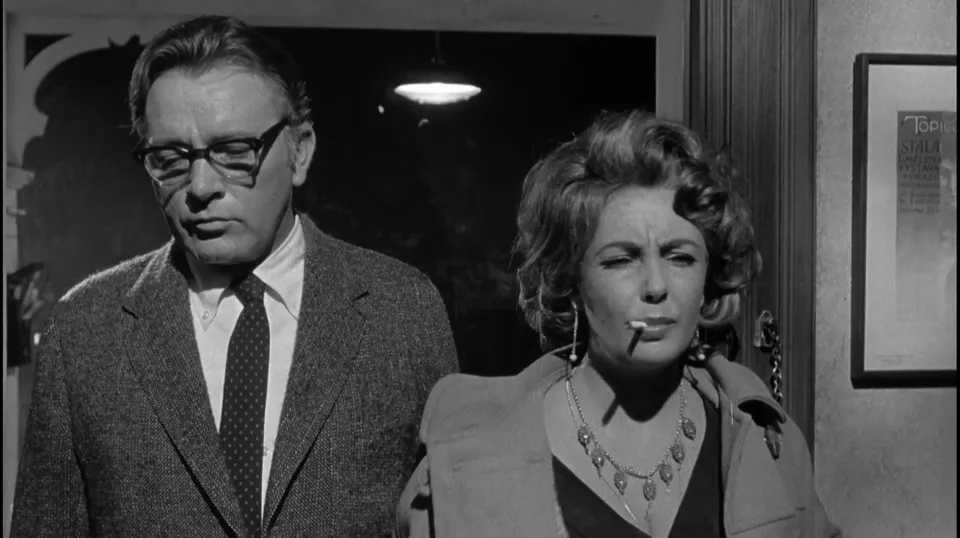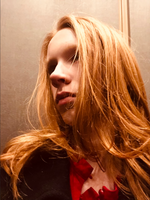Elizabeth Taylor's Bright Blue Eyes: Maggie the Cat, Virginia Woolf and the End of Old Hollywood

I love Old Hollywood. Romance and glamour on a black-and-white screen–something about the celluloid impressions of Audrey Hepburn and Gregory Peck gallivanting through Rome or Humphrey Bogart solving mysteries evokes something within me that I can't resist. What's so alluring about classic cinema is the safety it presents: there are no serial killers, drug dealers or major depressives; if there's violence at all, it is brief and bloodless, and even sex is only alluded to. The special effects are sparing and it is easy to remember that the film takes place in a sound studio somewhere in Los Angeles, with two actors reading dialogue crafted to be beautiful. Tropes have yet to be beaten to death, and every scene takes place in a burst of new inspiration.
Of course, this safety comes at the cost of reality. There were rarely any actors of color in Old Hollywood, and when there were, they usually played butlers and maids. Women are romantic interests only, and have little ambition or value as individuals. The restrictive Hays Code, which was not abandoned until the 1960s, prohibited directors from portraying difficult subject matter with any honesty and was rife with ridiculous rules, such as that kisses could only last three seconds or fewer1. Writers who supported political radicalism were blacklisted and had their careers ruined, and box offices and awards tended to favor safe, traditional films over anything daring or intellectual.
Old Hollywood was already beginning to fracture in 1958 when Elizabeth Taylor starred in Cat on A Hot Tin Roof with Paul Newman and Burl Ives. Based on a Tennessee Williams play, the film tells the story of Taylor's Maggie the Cat's desperate struggle to reinstate her alcoholic husband in his rich father's will. It is essentially cinema through argument, with the characters gradually revealing their conflict through screaming matches across a Southern Gothic mansion. The subject matter is surprisingly mature for classic cinema, including frank discussions of addiction and suicide, as well as many references to sex and the need to produce an heir to the family fortune.
For Taylor, who began her career as a child actress starring in films about little girls's relationships with horses, Cat on a Hot Tin Roof is a major departure from her early work. As a mid-career point, the film positions itself somewhere between Old and New Hollywood, showcasing two of the younger classic stars going head to head. In the continuing cinematic battle of convention vs. reality, it remains with one foot in each camp, desperately searching for grittiness and truth but caught up in the same cliches that dictated cinema up to that point. The Taylor/Newman arguments are essentially succession debates, which date back to King Lear and before, and the story of a troubled marriage rarely presents much new material to work with. "A family crisis brings out the best and worst in every member of the family," Newman's Brick gripes at one point, stating something that could have gone unsaid2.
Nine years later, Taylor starred in another film, this time with her then-husband Richard Burton, Who's Afraid of Virginia Woolf? In the passage of such a brief time, everything has changed. Mike Nichols shot this film in black-and-white, but now it is a callback, referencing classic cinema while destroying its tropes. The plot is asymmetrical and unpredictable, and Taylor and Burton's characters are hardly glamorous, middle-aged professors who spend most of their screen time drunk and in oblique conflict. Often, the characters confront each other head-on, and violence often seems more real than any CGI or green-screen could make it. Nichols puts the chaos in the foreground, giving the audience a disconcerting front seat to marital strife. Burton muses about killing his wife, and the camera gets close, to capture all of the turmoil evident in his expression.
With the descent of Old Hollywood, new directors began to prioritize reality over convention, and they created great masterworks while doing so. Tarantino and Scorsese could not have existed without somewhat 'transitional' filmmakers like Nichols and Sidney Lumet, who managed to bring cinema hurtling into a grimy present tense, where conflict was real and dangerous. What the transition lost us was the safety and the glamour of the classics, and modern films are not held in the same esteem or created with the same rose-colored glasses.
And so a decade after Maggie the Cat, we have the first shots of Virginia Woolf: the haunted couple walking quietly through campus, then turning on the light in the entryway to survey the damage. And with their youth went Hollywood.
-
- Alfred Hitchcock famously worked around this in Notorious, having his characters break their kiss every 3 seconds - the entire sequence lasted more than two minutes.
- Perhaps the most interesting part of the film is Burl Ives's Big Daddy's mutual contempt and attraction to Taylor's Maggie, but that is hinted to briefly, characteristic of Old Hollywood's allusions.
